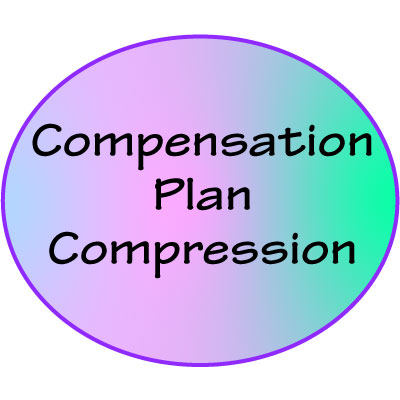 This is the first in a new series of compensation plan articles, each of which will focus on one important element to be considered in the design or improvement of each and every multilevel compensation plan. The topic of this compensation plan article is compression.
This is the first in a new series of compensation plan articles, each of which will focus on one important element to be considered in the design or improvement of each and every multilevel compensation plan. The topic of this compensation plan article is compression.
Compression is a term used to describe the action of bypassing inactive or ineligible independent representatives when determining rank qualifications and/or compensation plan earnings.
What Is Inactive?
All multilevel compensation plans should include a personal sales volume requirement. Personal sales volume includes the personal purchases of independent representatives plus the purchases of the representative’s personally sponsored customers.
When a representative meets or exceeds the personal sales volume requirement in a commission period, he or she is “active.” Independent representatives who are not active are “inactive.”
What Is Eligible?
For each paid-as title or paid-as rank in your compensation plan, there should be a unique set of requirements. Similarly, there should be for each paid-as title a unique set of rewards. The rewards are types of compensation, each of which may be calculated as a percentage of volume, a flat amount, or a share of a bonus pool.
When a representative is active but is not qualified to earn a specific type of compensation, he or she is “ineligible.”
Standard Compression and Dynamic Compression
When a compensation plan bypasses a representative who is inactive, this is called “standard compression.” For this commission run only, the compensation plan ignores the inactive representatives, paying the upline representatives this month as if the inactive representatives were not present in the genealogy.
Compensation plans that bypass inactive representatives and active but ineligible representatives use “dynamic compression.” For this commission run only, the compensation plan ignores the inactive representatives and the ineligible representatives, paying the upline representatives this month as if the ineligible representatives were not present in the genealogy.
What Is Breakage?
“Breakage” is the term used to describe compensation that is not paid out to independent representatives. Breakage exists when any of the following are true:
- there are inactive representatives and the plan uses compression (either standard or dynamic)
- there are active but ineligible representatives and the plan uses dynamic compression
- not all representatives are eligible to earn every type of compensation that could be paid out
Why Is Breakage Important?
Breakage is important because it makes a compensation plan appear to be richer than it really is. When current or prospective representatives add up the percentages in the compensation plan chart, they incorrectly conclude that the total they’ve calculated is the total percentage that the company pays out.
Breakage (unpaid compensation) is the difference between the theoretical maximum payout of a plan (the total of all those percentages) and the actual payout. Breakage is an unpublished percentage. It is or should be a closely guarded secret to be kept far away from independent representatives because a published breakage percentage reveals what a compensation plan really pays out. (It’s less than the theoretical maximum).
Who Loves Compression?
Independent representatives sure do. When there is compression, the compensation plan allows them to get paid deeper into their organizations. Sounds good, right? Hold on a moment.
So, What Are The Problems With Compression?
Ah, there are several, unfortunately. Here is the list:
- The theoretical maximum payout of a plan with compression (the sum of those percentages) will be less than it could be if there was no compression. A plan with compression appears to most observers to pay out less than a plan without it. How’s that for irony?
- While your compensation plan payout is your largest expense, you can’t afford to waste your compensation plan dollars. You should be paying for 12 specific behaviors. If you’re overly generous with compression, you may be wasting your rewards on the wrong behaviors. The bonus you could have added won’t make it into your plan because compression consumed the funds for it.
- When there is compression, there is less of a need for representatives to recruit and there is less of a need to work closely with those representatives who are close to you structurally in your downline organization.
Why Is Compression Not One-Size Fits All?
Every direct selling company makes compensation plan design decisions. Compression is one of these decisions.

 Jay Leisner, the President of Sylvina Consulting, is a top compensation plan and direct selling expert, a trusted adviser to new and established network marketing and party plan companies. For more than 30 years, Jay has enjoyed assessing and improving network marketing, party plan and referral marketing companies across the globe.
Jay Leisner, the President of Sylvina Consulting, is a top compensation plan and direct selling expert, a trusted adviser to new and established network marketing and party plan companies. For more than 30 years, Jay has enjoyed assessing and improving network marketing, party plan and referral marketing companies across the globe.
Leave a Reply